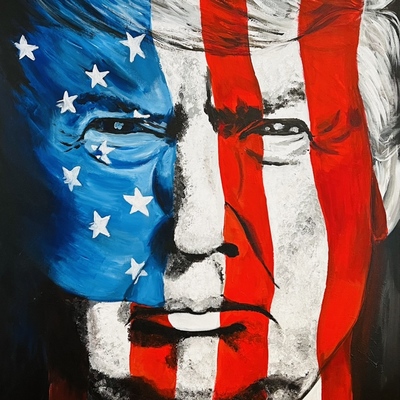Stay informed on the latest Truth Social posts from Donald Trump (@realDonaldTrump) without the doomscrolling. Consider it a public service for your mental health. (Why?)
- Tariffs are a powerful negotiating instrument in international trade.
- Tariffs are necessary to persuade major countries to open their markets to the United States.
- Without tariffs, it would be impossible to achieve market openness from other countries.
- The ultimate objective is for American goods to face zero tariffs when entering foreign markets.
The post directly addresses trade policy, specifically the use of tariffs and the goal of market access. These factors are critical for corporate profitability, supply chain stability, and consumer spending, directly impacting multinational corporations and the broader economy, which can influence S&P 500 performance. While a reiteration of a known stance, it highlights a policy approach that, if actively pursued, carries significant market implications.
The post focuses exclusively on economic policy and trade negotiations, discussing the use of tariffs as leverage for market access. There is no mention of military action, international disputes beyond trade, or threats that would escalate to geopolitical conflict.
- Commodities: Trade policy emphasizing tariffs and market access could impact global demand and supply chains. Increased trade friction might raise input costs or dampen global growth, affecting industrial metals (e.g., copper). Gold (XAU) could see increased demand as a safe haven if trade tensions rise. Oil (WTI) prices could react to changes in global growth forecasts. Short-Term Watchlist: XAU/USD price action, industrial commodity indices, global manufacturing PMIs. Medium-Term Focus: Inflation trends, supply chain re-configuration, global energy demand.
- Currencies (Forex): Trade policy directly influences currency valuations. A focus on using tariffs as leverage could strengthen the US Dollar (DXY) if perceived as a tool for economic advantage or a flight to safety. Conversely, retaliatory measures could weaken the USD if global trade volumes decline. Currency pairs like USDCNH and EURUSD would be particularly sensitive to trade headlines. Short-Term Watchlist: Trade headlines, central bank commentary, global risk sentiment indicators. Medium-Term Focus: Bilateral trade balances, capital flows, relative economic performance across major economies.
- Global Equities: Major global indices such as the S&P 500, Nasdaq, STOXX 600, Nikkei 225, and Hang Seng would react to the implications of trade policy on corporate earnings and investor sentiment. Sectors heavily involved in international trade, including technology, manufacturing, and consumer discretionary, could experience volatility due to disrupted supply chains, increased costs, or altered market access. Short-Term Watchlist: Sector performance, futures opening prices, VIX levels. Medium-Term Focus: Corporate earnings revisions, global GDP growth forecasts, progress on trade agreements.
- Fixed Income (Bonds): Trade tensions and the potential for tariffs can increase economic uncertainty, which typically leads to a flight to safety, potentially causing US Treasury yields (e.g., 10Y and 2Y) to fall. However, tariffs can also create inflationary pressures due to higher import costs, which could push yields higher over the longer term. Credit spreads for corporate bonds might widen if economic uncertainty rises. Short-Term Watchlist: Treasury yield movements, corporate credit spreads, economic data releases. Medium-Term Focus: Inflation expectations, fiscal policy discussions, global sovereign debt dynamics.
- Volatility / Derivatives: Discussions around trade policy often introduce market uncertainty, which typically leads to increased volatility. The VIX could spike as investors seek to hedge against potential market disruptions from tariff implementations or escalating trade disputes. Options markets would likely price in higher implied volatility across various asset classes. Short-Term Watchlist: VIX levels, options volume on key indices/ETFs, term structure of VIX futures. Medium-Term Focus: Geopolitical risk premiums, policy uncertainty indices, systemic tail risk events.
- Crypto / Digital Assets: Bitcoin (BTC) and other digital assets respond to broader macro conditions and risk sentiment. In a scenario of increased trade friction and economic uncertainty, Bitcoin's behavior could vary, potentially acting as a safe-haven asset akin to gold or remaining correlated with tech stocks as a risk-on asset. Overall liquidity conditions also play a significant role. Short-Term Watchlist: BTC/USD price action, correlation with tech stocks, crypto funding rates. Medium-Term Focus: Macro liquidity shifts, regulatory developments in the digital asset space, institutional adoption trends.
- Cross-Asset Correlations and Systemic Risk: The consistent application of tariffs or the pursuit of market opening could alter traditional cross-asset correlations, for example, causing equities and bonds to move in tandem if both are reacting to trade-induced economic shocks. Systemic risk could emerge if trade disputes significantly disrupt global supply chains or financial stability. Short-Term Watchlist: Gold/USD correlation, equity-bond correlation, indicators of liquidity stress (e.g., TED spread). Medium-Term Focus: Deglobalization trends, supply chain resilience, central bank responses to trade-related shocks.
- Retail Sentiment / Market Psychology: Retail investors are highly reactive to headline news concerning trade policy, as it can directly impact consumer prices and the performance of companies. Discussions about tariffs and market access could influence retail sentiment, potentially leading to shifts in investment strategies or increased participation in specific sectors or assets perceived to be affected by trade policy. Social media trends and financial news consumption would serve as key indicators. Short-Term Watchlist: Social media mentions of trade/tariffs, retail trading volumes, sentiment surveys. Medium-Term Focus: Long-term impact of trade policy on consumer purchasing power, potential for coordinated retail pushes, and regulatory responses to retail trading behavior.

